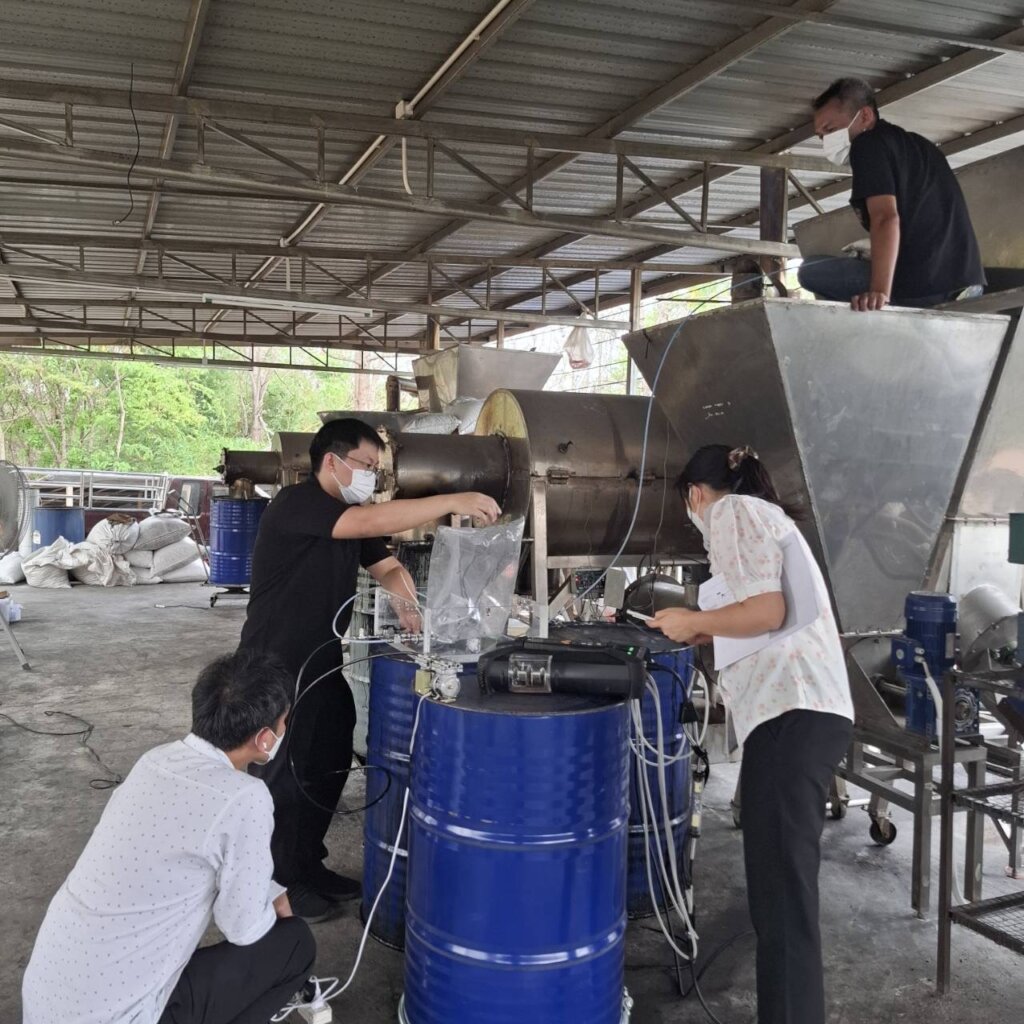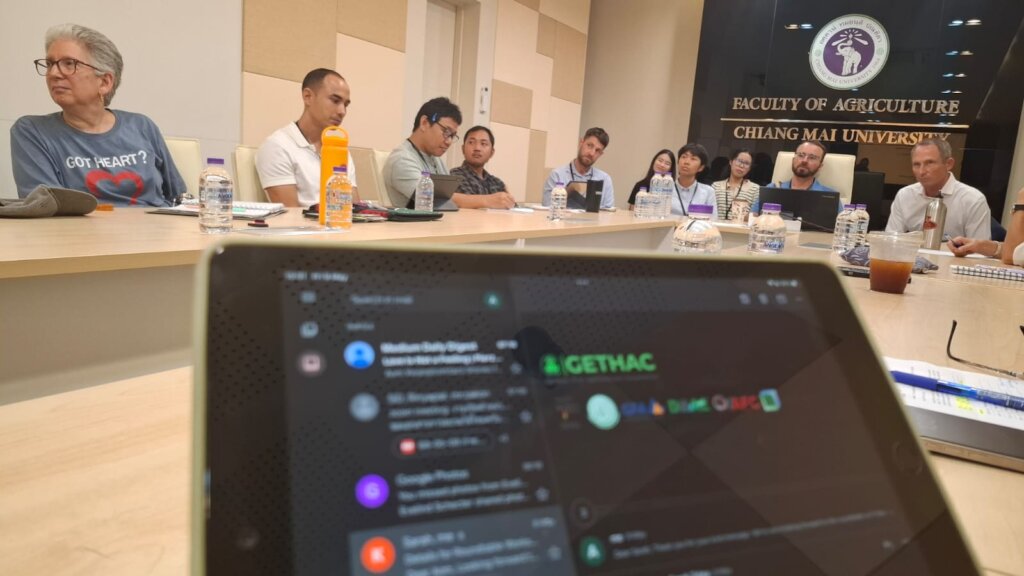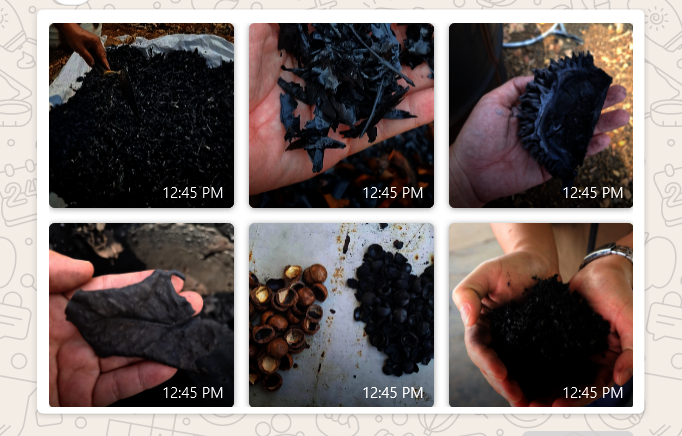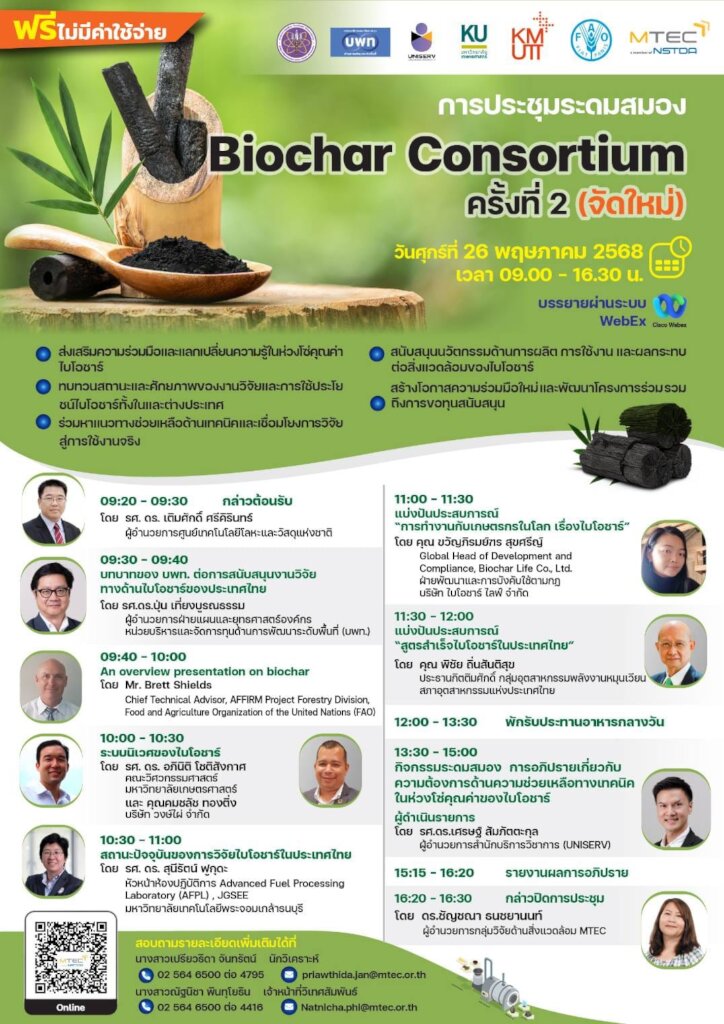By Evelind Schecter | Program Manager
The rainy season started early this year, ending the smoke from crop and forest fires until the weather gets drier. Here are some updates on our Stop the Smoke efforts here in Northern Thailand.
While commissioning the Wastex biochar equipment has taken longer than hoped, we’re making steady strides toward full operation. We’ve had significant interest in the technology. Representatives from the Provincial Local Development Department visited to observe the process and learn how this model might be applied in other smoke-prone areas. In addition, the National Metal and Materials Technology Center (MTEC) came to test emissions from the Wastex unit, contributing data to the national Thailand Biochar Consortium research project.
The Consortium itself held a major brainstorming workshop on May 26. Participants included representatives from FAO, university researchers, and biochar producers across Thailand. Warm Heart’s Aom presented our multi-country work with smallholders, highlighting practical, low-cost methods for making biochar and integrating it into daily farming.
On May 9, we were invited to join a roundtable hosted by the German-Thai Agricultural Cooperation Project (GETHAC) at Chiang Mai University’s Faculty of Agriculture. It was inspiring to see so many organizations tackling crop residue burning. From government programs to grassroots efforts, biochar is gaining traction as a scalable solution, including within the Royal Project Foundation’s large agricultural development programs.
Training also continued with Michael and Prachan Jakeo (“PJ”) joining a World Wildlife Fund program to train farmers in Tak province. They face the many challenges of steep terrain and worsening soil degradation. Teaching smallholders how to convert waste into biochar is not just about smoke reduction—it’s about restoring soil, increasing yields, and protecting livelihoods.
In our field testing, Aom has been expanding our biochar feedstock trials. We’ve added small branches with leaves, coffee husks, durian shells, macadamia shells, teak leaves, and cassava rhizomes to our experiments. Understanding how each feedstock performs is critical for determining the best pyrolysis kiln and expanding the adoption of biochar.
As always, thank you for supporting this work. Your partnership allows us to keep innovating, sharing what we learn, and equipping farmers with tools for resilience and environmental restoration. Together, we are making visible progress—one farmer, one field, and one fire-free harvest at a time.
Best wishes for the summer months!
Dana, Michael, Evelind and the Warm Heart Biochar Team
Project reports on GlobalGiving are posted directly to globalgiving.org by Project Leaders as they are completed, generally every 3-4 months. To protect the integrity of these documents, GlobalGiving does not alter them; therefore you may find some language or formatting issues.
If you donate to this project or have donated to this project, you can receive an email when this project posts a report. You can also subscribe for reports without donating.
Support this important cause by creating a personalized fundraising page.
Start a Fundraiser


